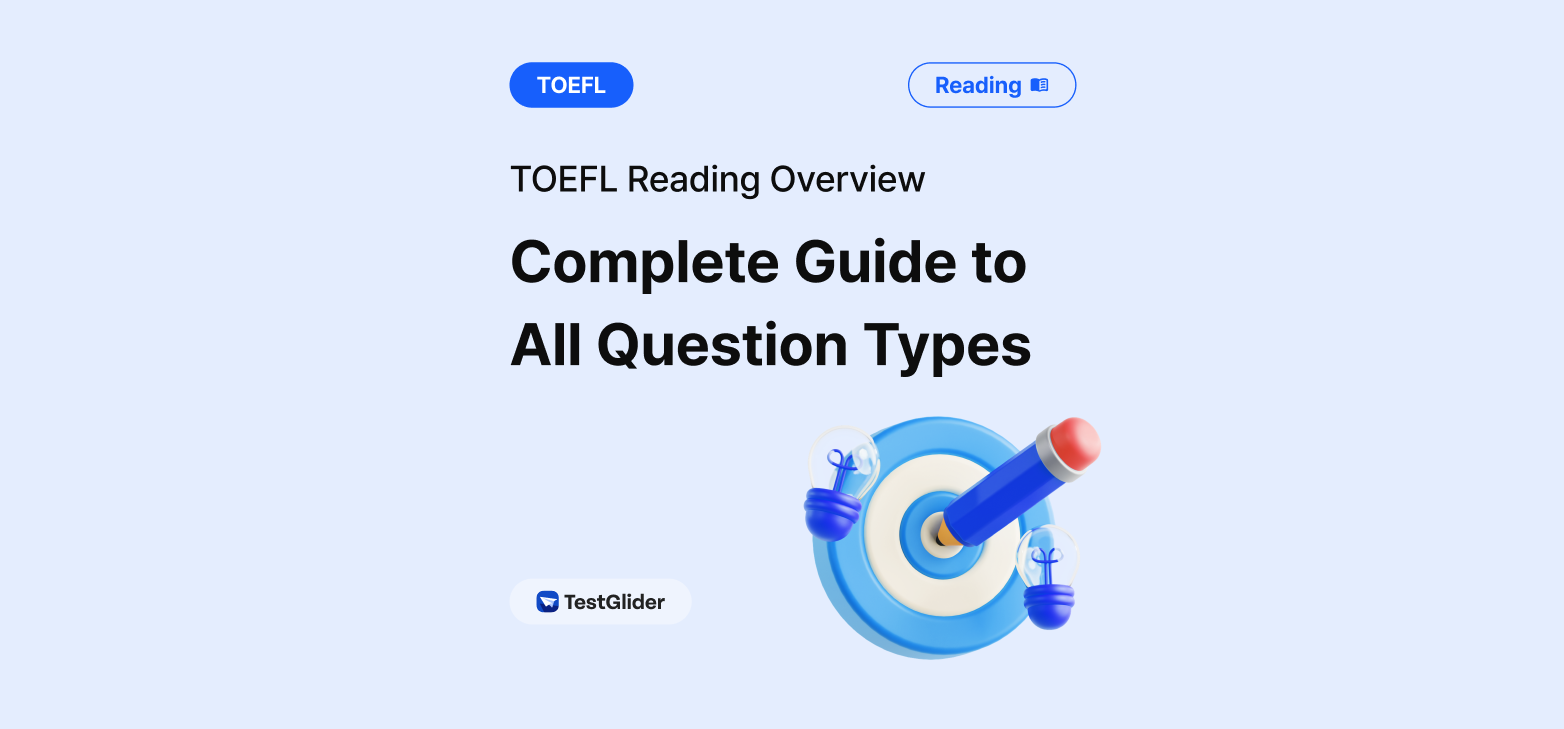Overview of the TOEFL Reading Section
The TOEFL iBT Reading section, updated in July 2023, now follows a more streamlined format:
- First section of the test
- 3 reading passages (academic texts)
- 10 questions per passage (30 questions total)
- 42 minutes to complete (approximately 14 minutes per passage)
- All questions are multiple-choice format
- Score range: 0-30 points
10 Types of TOEFL Reading Questions
1. Factual Information Questions
These questions test your ability to identify and understand specific facts directly stated in the passage.
Example: “According to paragraph 2, what is the primary reason for…?”
2. Negative Factual Information Questions
These questions ask you to identify which answer choice is NOT mentioned or is NOT true according to the passage.
Example: “Which of the following is NOT mentioned in the passage as a factor contributing to…”
3. Inference Questions
Tests your ability to understand information that is implied but not directly stated.
Example: “What can be inferred from paragraph 3 about…”
4. Rhetorical Purpose Questions
These questions ask about the author’s intention in mentioning specific information.
Example: “Why does the author mention… in paragraph 4?”
5. Vocabulary Questions
Tests your understanding of academic vocabulary in context.
Example: “The word ‘unprecedented’ in paragraph 1 is closest in meaning to…”
6. Reference Questions
These questions ask about pronouns and other reference words in the text.
Example: “The word ‘they’ in line 15 refers to…”
7. Sentence Simplification Questions
You need to choose the option that best expresses the essential information in a highlighted sentence.
Example: “Which of the following best expresses the essential information in the highlighted sentence?”
8. Insert Text Questions
Tests your understanding of paragraph organization and logical flow.
Example: “Where would the sentence best fit in the passage? Click on a square [■] to add the sentence to the passage.”
9. Summary Questions
Tests your ability to identify main ideas and major points.
Example: “Complete the summary by selecting THREE answer choices that express the most important ideas in the passage.”
10. Fill in a Table/Chart Questions
Requires categorizing information from the passage into a table or chart.
Example: “Complete the table summary below by matching the appropriate statements to the categories they describe.”
Most Challenging Question Types and Study Tips
Based on student feedback and performance data, the three most challenging question types are:
1. Inference Questions
Inference questions are consistently ranked as one of the most challenging types for TOEFL test-takers. The difficulty lies in understanding meanings that aren’t explicitly stated in the text and identifying logical connections within the context. To effectively tackle these questions, it’s essential to practice identifying hidden relationships within passages. Pay special attention to words that indicate cause-effect relationships, such as ‘therefore,’ ‘consequently,’ and ‘as a result.’ A highly effective study technique is to create your own inference questions while reading academic texts. Try asking yourself questions like “What does this paragraph imply?” or “What is the author suggesting through this example?” This active engagement with the text will help develop your inferential thinking skills.
2. Summary Questions
Summary questions require the ability to distinguish between main ideas and supporting details in lengthy passages. Many students struggle with differentiating between essential information and supplementary details in academic texts. To improve your performance on this question type, regularly practice creating outlines while reading academic articles. Focus particularly on topic sentences and concluding statements, as these often contain key ideas. Additionally, train yourself to recognize when the same concept is repeated using different vocabulary – this is a common pattern in summary questions. Understanding how authors structure their main arguments versus supporting evidence will significantly boost your ability to identify core ideas.
3. Insert Text Questions
Insert Text questions are high-level challenges that test your understanding of textual flow and logical coherence. Success in these questions requires a comprehensive grasp of paragraph relationships and natural text progression. To excel in this question type, developing a strong understanding of transition words and referencing words is crucial. Familiarize yourself with the proper usage of transitions like ‘however,’ ‘moreover,’ and ‘therefore,’ and practice identifying what pronouns and demonstratives like ‘this,’ ‘these,’ and ‘such’ refer to in context. Make it a habit to analyze paragraph structure and sentence connections when reading academic texts. Pay attention to how ideas flow from one paragraph to another and how authors create coherent arguments through careful text organization.
📚 Related Articles :
Looking to master other sections of the TOEFL? Check out our comprehensive guide: Complete Guide to TOEFL iBT Listening Question Types (2024 Update) →
🎯 Ready to Master TOEFL Reading?
Take TestGlider’s FREE TOEFL Practice Test and assess your current reading level. Join thousands of test-takers who’ve improved their scores through our comprehensive practice materials.
